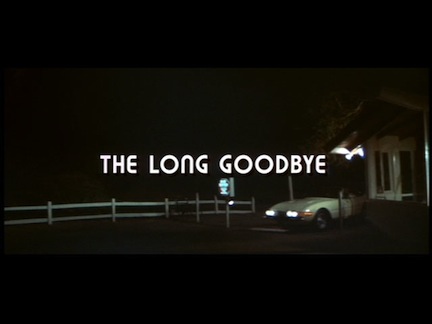"It's okay with me" THE LONG GOODBYE
 Tuesday, December 13, 2011 at 09:46PM
Tuesday, December 13, 2011 at 09:46PM
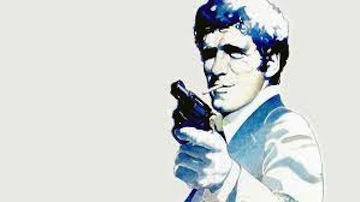 A modernist absurd take on the classic Raymond Chandler novel featuring Hollywood private detective Phillip Marlowe. Elliot Gould brings an offhand, shambling grace to a character burned into America’s memory as hard-boiled and in control. Gould’s Marlowe never even attempts control: he’s much too aware of the randomness of fate and the pointlessness of any proactive behavior.
A modernist absurd take on the classic Raymond Chandler novel featuring Hollywood private detective Phillip Marlowe. Elliot Gould brings an offhand, shambling grace to a character burned into America’s memory as hard-boiled and in control. Gould’s Marlowe never even attempts control: he’s much too aware of the randomness of fate and the pointlessness of any proactive behavior.
For Altman, Marlow’s a man of the 1940s trapped in the ‘70’s. Marlowe wears old suits, drives an antique car and holds himself to an outdated moral code. His code includes loyalty, fair play and a refusal to sell out. Any man adhering to such a code, Altman contends, will experience serious problems living and working in modern Los Angeles.
Alienated yet determined to survive, Marlowe’s mantra is: “It’s okay with me,” by which he separates himself from the grasping of those around him. Marlowe’s anachronistic personality functions as his salvation and as the root cause of his lack of success – the struggle between these personal morality and career striving being a recurring Altman theme.
More than pace or rhythm, Altman is a master of mood, and his shift from sequence to sequence is usually dependent on one mood ending and another taking hold. This narrative use of mood is enhanced by Leigh Brackett’s sarcastic, but, in its way, utterly sincere screenplay (Brackett contributed to the screenplay of 1946’s Chandler adaptation The Big Sleep). Brackett sees Marlowe and Hollywood through the prism of her thirty years in The Show Business; her nasty humor and unexpected violence give the story its edge.
The constantly shifting, constantly searching camera mirrors Marlowe’s quest and reveals a shadowy world hidden beneath L.A.’s sunshine. That shadowy universe includes a drunken author, his scheming wife, and a vicious, neurotic gangster played by director Mark Rydell (The Rose, On Golden Pond). Stories held that Rydell took the part to learn how Altman dealt with his actors. Everyone except Marlowe is neurotic in that L. A. Showbiz way; they’re neurotic and proud of it.
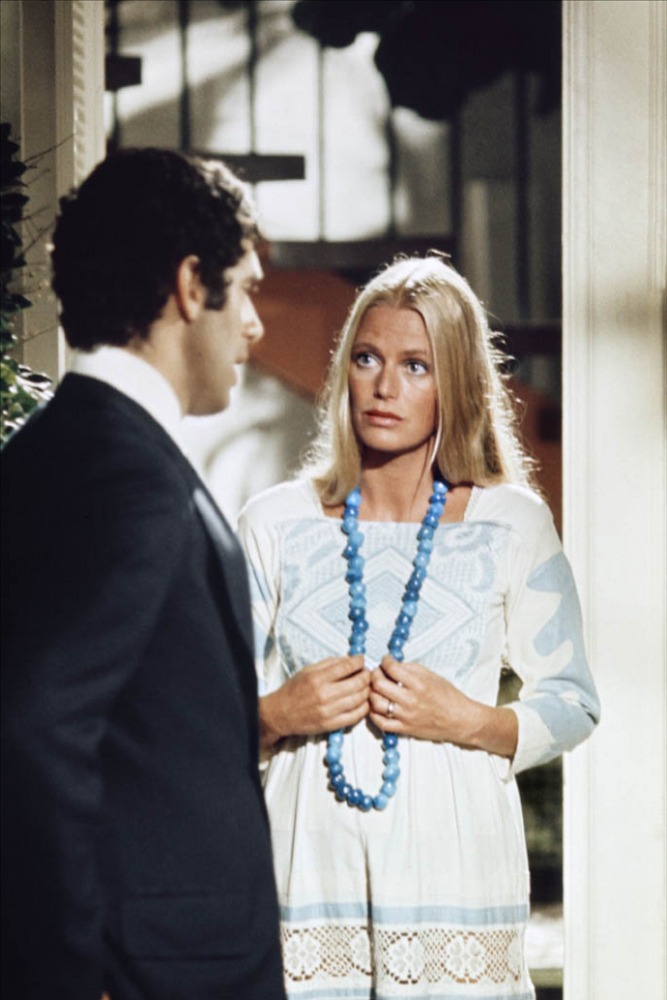
Perennially doomed Noir hero Sterling Hayden, unrecognizable beneath a huge hippie beard and tangled gray mane, plays the doomed writer. Jim Bouton, author of the groundbreaking baseball tell-all Ball Four, plays Marlowe’s absent friend. Nina Van Pallandt – famous in the early ‘70’s for her role in a since-forgotten front-page, high-society scam – is the femme fatale and Arnold Schwarzenegger enjoys his first dramatic role (bodybuilding soft-core aside) as a mob enforcer. Blink and you may miss him.
A hundred wonderful hidden jokes and references to other films noir run through but never detract from the picture. Among the most subversive is that the film’s theme song plays on whatever music source is close to hand: Gould listens to a jazz rendition on the car radio; when he walks into the grocery store the Muzak version picks up without missing a beat. When Marlowe visits a remote Mexican village, a funeral band marches by blaring the refrain.
A touching, funny, suspenseful parody of detective movies that is among the best detective movies ever made.
A Girl and A Gun; The Complete Guide to Film Noir
 Sterling Hayden and Elliot Gould
Sterling Hayden and Elliot Gould
Subject Matter
1) Self-delusion and the mechanisms that enforce it; how we announce our own delusions unceasingly and still ignore them; the tenacity with which we cling to the fantasy that no one notices the dissonance between our talk and action; how pissed off we might become if they do.
2) The hard hard road facing anyone determined to live by a moral code; the difficulties facing anyone who will not conform; the punishment due anyone who deals in truth.
3) Payback is a what?
4) Camera movement
2) Script
Because Altman encourages his actors to improvise, it’s hard to tell which lines emerged in the heat of the moment and which from the page. Not that it matters; wherever the words derive, they hang together. Screenwriter Leigh Brackett is Hollywood history incarnate. Her credits include The Big Sleep, Rio Bravo, Hatari!, The Rockford Files and The Empire Strikes Back and here, for once, she seems unleashed, able to release her id, her nastiness, her dark side, and still the story rolls along, perfectly structured scene by scene and act by act. No moment, however much it serves as commentary on itself, is wasted as plot-point or narrative advancement. Brackett and Altman, hurling the story into a modern era while emphasizing an existential, crippling self-consciousness that Marlowe never before suffered from on the screen (but which runs through all the books), make sure that character always serves narrative and vice versa. In Noir and thrillers in general, usually one suffers for the other. (The Bourne Identity is a surprisingly good example of narrative fueling character) Their screenplay underscores the character’s issues using modern language and gesture, but never strays from the soul of the source material. In mood, pacing, understanding of the moral struggle, transposition of character and, most importantly, understatement - a critical Chandler attribute - this is the finest adaptation of his work. And let’s not forget Chandler’s sophisticated view of the machinations of society, which tend to disappear in some adaptations. Here, nobody’s trying to make the story dumber.
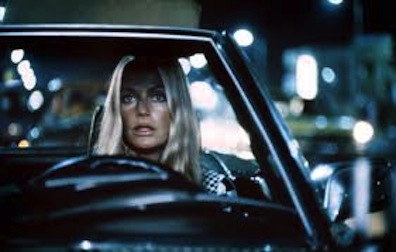
3) Images - Composition and Lighting
Altman’s camera conveys the narrative action and the psychological underpinnings of that action. His camera travels, questing, seeking, never letting us grow comfortable viewing from one position; it’s a Cubist approach, wherein Altman shows us every angle of every moment.
Do you know how difficult this is for a camera crew? Moving constantly, changing focus every second, letting actors travel as they will and then catching up to them… Think of this film, even more than McCabe & Mrs. Miller, as jazz improvisation, where no matter how far afield the ideas are flung, the melody is never lost.
Functionally, the constantly moving camera is a metaphor for Marlowe’s quest, his and our confusion, and a reminder that a single mystery underlies this story and we are all looking for its solution. Plus, the motion symbolizes the hopeless moral/personal confusion of every character: their houses are built on sand; there is no safe place to stand, no one clear perspective from which to view the struggle.
Contrast this with the simple stately camera in Lawrence of Arabia, which by its stateliness and god-like omniscience tells us: this is a moral world with clearly defined compass points. Come, observe how this world works and trust this perspective. Altman/Zsigmond say just the opposite: come, here’s total fucking moral anarchy barely perceptible under a truckload of existential dread; let us show it to you the only way we can, from multiple perspectives originating from a godless, answerless, baseless void.
4) Acting Performances
Godard said: “Realism isn’t realistic,” he meant that naturalism takes as much work as formalism. You might watch the apparent off-the-cuff natural performances in The Long Goodbye and think they were easier to attain than those in say, Contempt. They ain’t.
Altman rehearses his actors like a theatre company. He spends, or spent at the time, more time rehearsing than shooting. His actors knew their characters, and their relationships, and each conversation seems remarkably real, including the scenes with amateurs Jim Bouton & Nina Van Pallandt. Here, as in all Altman’s best films, folks behave like folks; they interrupt, talk over one another (something Altman took from the French New Wave and something almost no other American director has ever had the guts to try or the charm to convince his/her actors to attempt), often say the opposite of what they mean and often show the opposite of what they really feel.
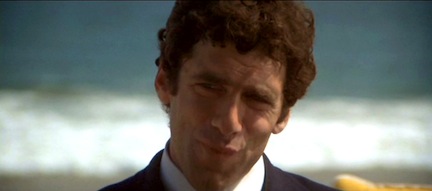
It’s my pet theory that Altman’s early films -- M.A.S.H, The Long Goodbye & McCabe & Mrs. Miller -- changed the face of American movie acting. I think he took us from the tortured formalism of Method, and moved us into a new conversationalism. All our stars of a certain age: DeNiro, Sigourney Weaver, William Hurt, Meryl Streep, the guys who came out of Mamet (Mantegna, Macey, etc.) do not respond to screen moments like actors; they respond like normal confused people who often do not know what they feel but always want to appear in control. This is very Altman. Elliot Gould gives the performance of his life.
5) Pace, Cadence and Rhythm
Because the camera never stops moving, and because the story appears to shamble around - even though it’s quite directed, purposeful and intentional - you might be left with the illusion of randomness. But the story mirrors Marlowe’s perception of the mystery, as Chandler’s books always do. In the beginning, when Marlowe’s baffled, the story moves quickly here, slowly there...as Marlowe’s sense of events grows clearer, the pace becomes more definite. No one thinks of Altman as a structualist - no one thinks of Godard in that way, either - because his films seem to be driven by emotion. But a careful viewing, or maybe a second viewing, show an artist in total control of his material.
6) Editing
Again, seemingly random and confusing, but in fact always purposeful. Because the camera never stops moving, the cuts from wide shots to close-ups are especially powerful. As is Altman’s’ habit of letting the lens veer away from the main action as a scene winds down, zooming in to some peripheral but worthy moment, and then editing off that zoom to a whole new scene and another moving camera. The cuts from motion to motion are sublime and grant the film a kind of musical flow.
7) Use of supportive elements: design, costumes, music, etc.
Nobody American understands mise-en-scene like (early) Altman. The foreground in his best pictures always vanishes into the background, which holds all the clues of class, place, the relationship between the characters in that moment and the ruling emotional gestalt of wherever the scene is set. Altman’s locations – an expensive L.A. nuthatch, a Malibu beach house, a rundown private eye’s apartment – seem so recognizable, so ‘of course that’s the way it would look.’ He achieves this by shooting in real locations, but also by choosing locations that are perfect archetypes of themselves.
Altman’s a subtle, purposeful costumer; Nina Van Pallandt and Jim Bouton’s leisure clothes are so much more assured that Gould’s ‘40’s suits or the gangster’s slimy polyester. But the differences are never obvious; as with all the other self-delusions on display, everybody thinks they look their best.
Except Marlowe, who can’t be bothered.
